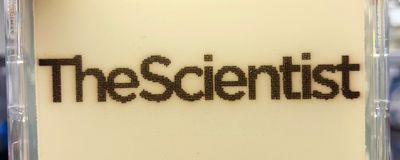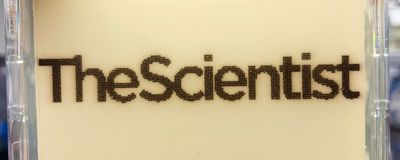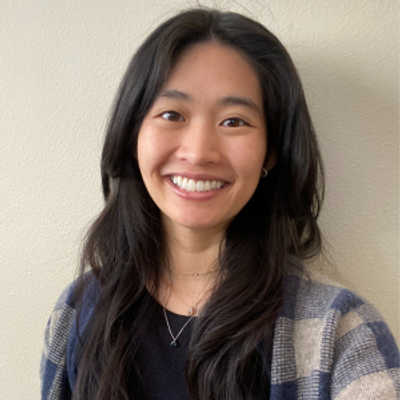ABOVE: Researchers genetically engineered yeast to produce vibrant hues and employ a technique called “biopointillism” to create intricate works of living art. Aleksandra Wudzinska, Boeke Lab, NYU Langone Health
While famous for its role in creating crispy bread and frothy beer, yeast is versatile in numerous applications. Jef Boeke, a geneticist at New York University, and his team use yeast as an artistic medium in their lab. Instead of pens or paintbrushes, these scientists use genetics, genomics, and synthetic biology to transform yeast cultures into vibrant works of art.
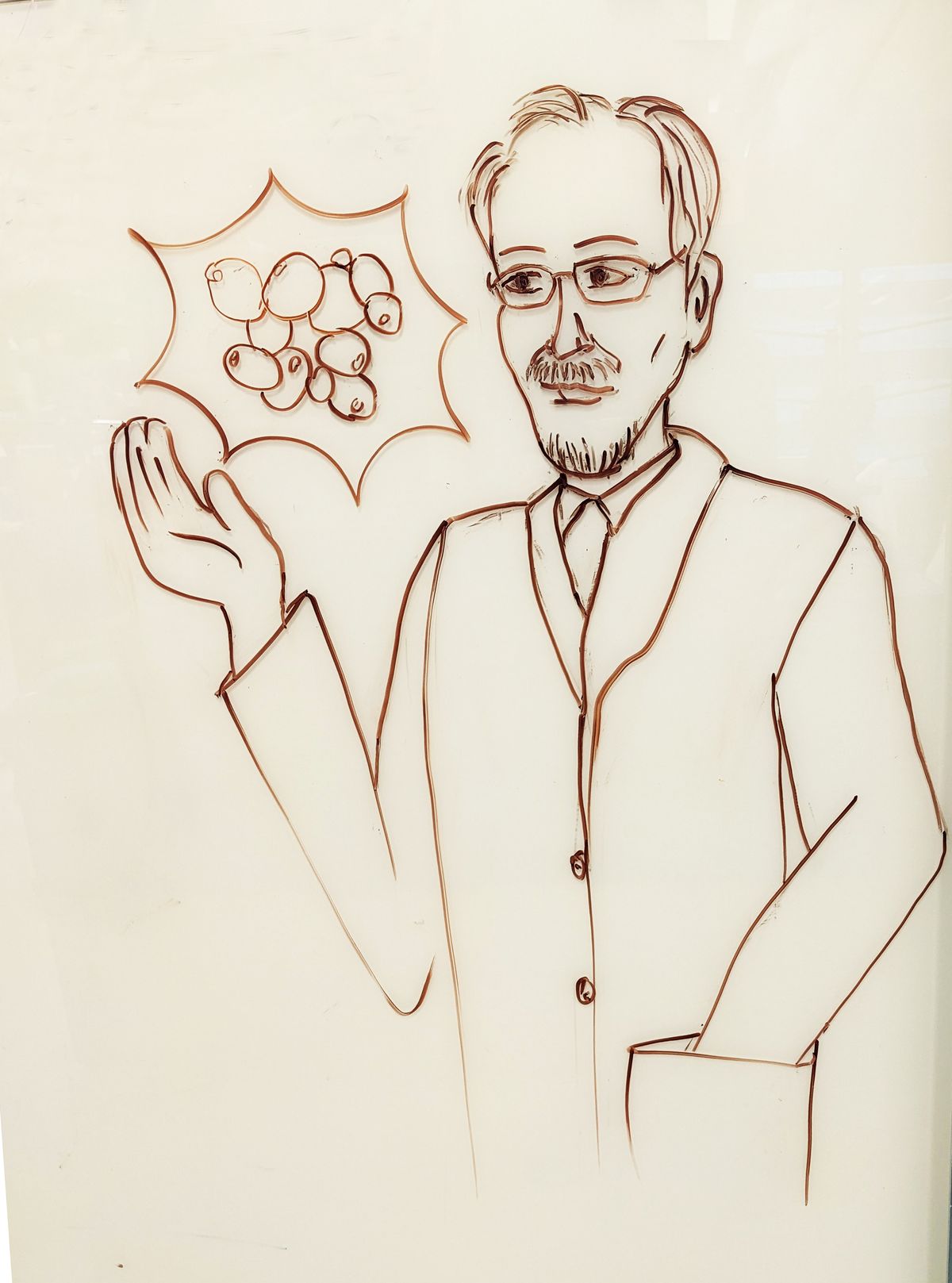
The Yeast Art Project arose more than a decade ago as an unexpected offshoot of Boeke’s “Build-a-Genome” course at Johns Hopkins University. Students learned how to build synthetic DNA, and this educational exercise also doubled as a workhorse for a broader project: the creation of a fully synthetic eukaryotic genome of Saccharomyces cerevisiae, known as Sc2.0.1
Tangentially, students used the same techniques to genetically modify yeast to produce beta-carotene, enhancing its nutritional value and transforming its off-white color to shades of yellow and orange. This pigment change inspired a couple of Boeke’s students to explore the artistic side of yeast.
They modified yeast to create living pieces of art on agar canvases using biopointillism; a robot positioned each dot of yeast, or biopixel, onto agar plates. Their first artwork, an homage to Natty Boh, the Baltimore brewery National Bohemian’s mascot, featured three colors and a resolution of 384 biopixels. This artistic direction became an unexpectedly fun side project for Boeke and his team.
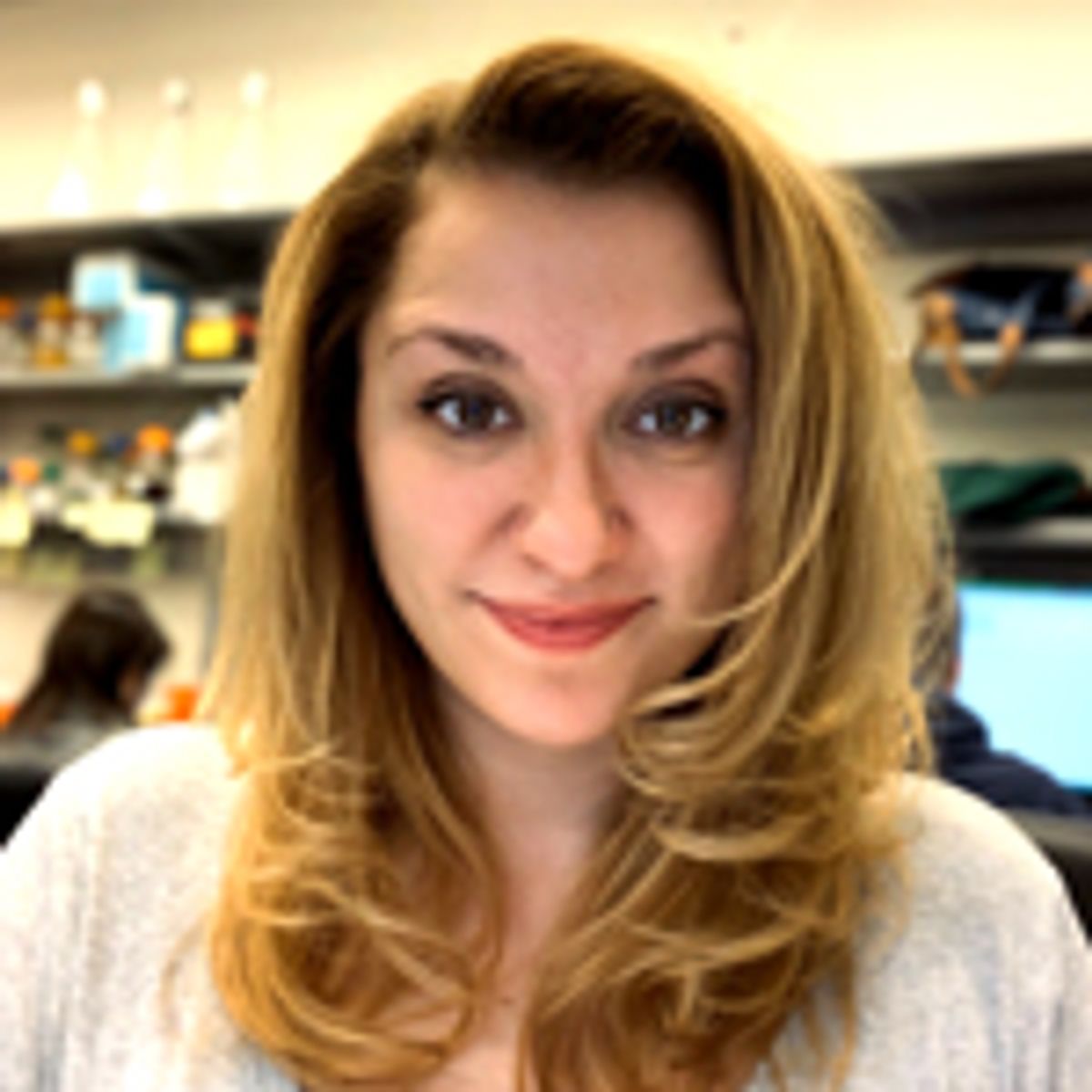
When Aleksandra Wudzinska, Boeke’s laboratory supervisor, joined the team, she eagerly embraced the chance to experiment with creating more colors for these designs alongside students. Inspired by their enthusiasm, Boeke champions this project as a creative way to foster curiosity and engage the community to learn about genetic engineering and microbiology.
Sampling from Nature
To expand their color palette beyond white, yellow, and orange, the researchers got creative with their methods. Boeke’s team coupled yeast Golden Gate cloning and the versatile genetic assembly system techniques to mix and match transcriptional units to engineer yeast to express a gene of interest.2,3 Inspired by the vivid hues of nature, they incorporated genes derived from a menagerie of sources. The bacterial pigment violacein yields green or a deep purple, nearly black yeast. Meanwhile, pigment-encoding genes from sea anemones can produce blue and genes from corals create a pale purple.
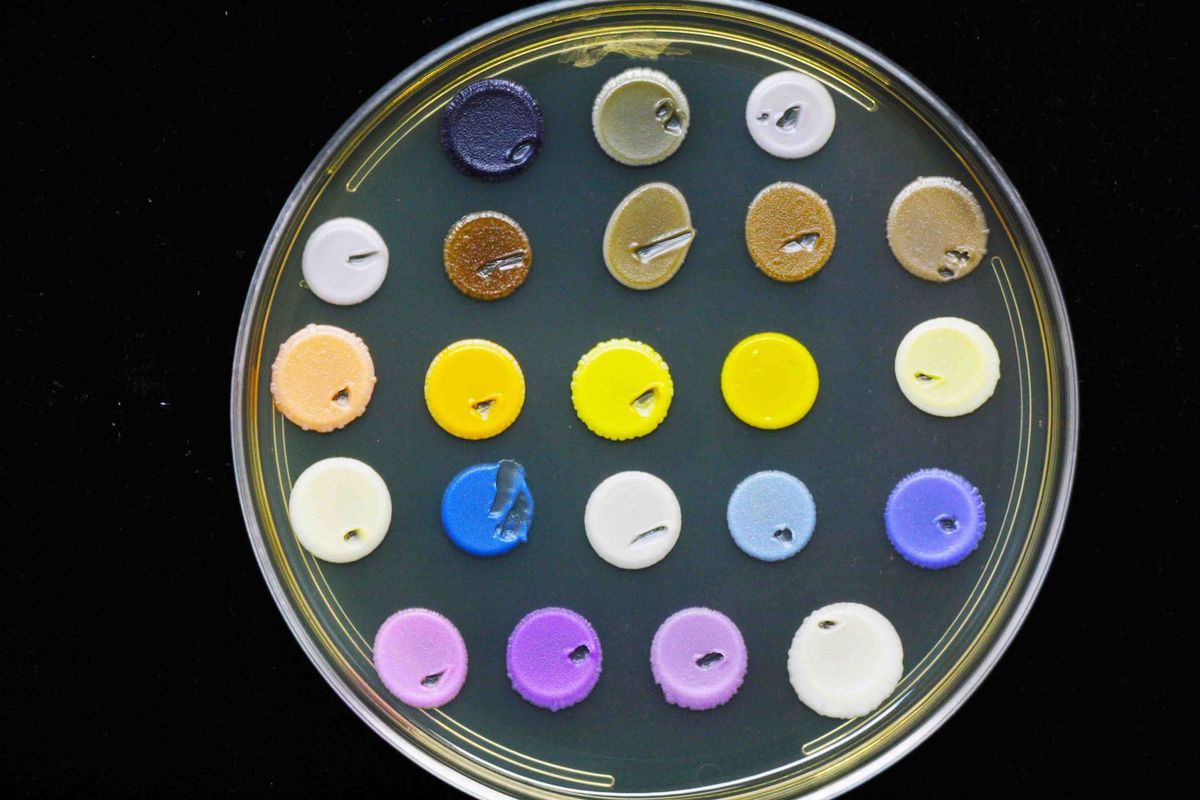
By adjusting the number of active genes, “You can change the shade of a certain color by messing around with the combination of promoter and terminator of the gene,” explained Wudzinska. Their initial palette of three colors quickly expanded to nearly 35 colors.
Wudzinska also noted the challenge of making new colors. “We have also played around with the idea of mixing two different types of yeast like yellow and blue to make green,” she added, though these combinations haven’t yielded drastically different results. She found that standalone violacein-producing yeast was more suitable for achieving a signature natural green in recreations of timeless artworks.
Painting by Pixels
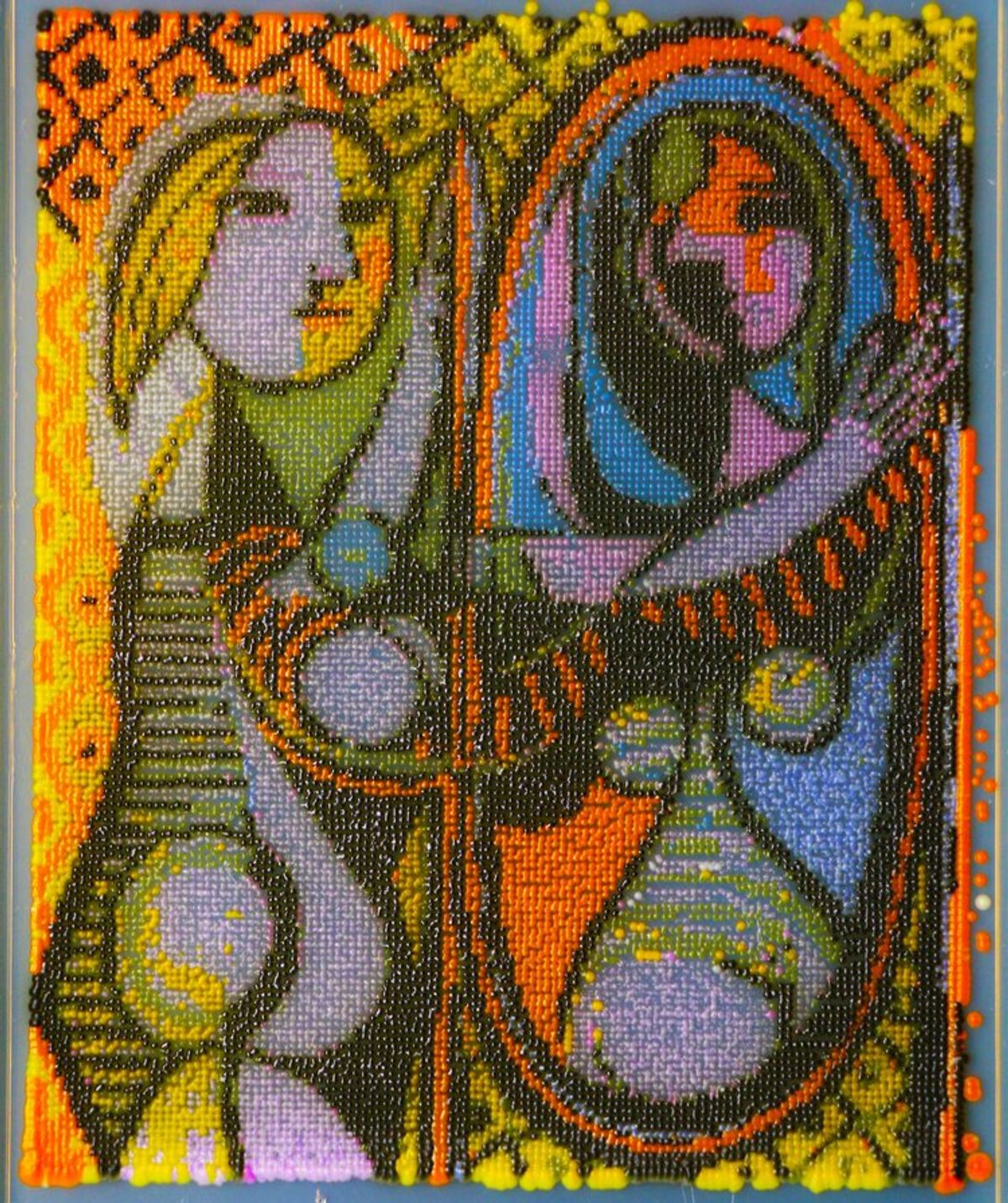
Since Natty Boh, Boeke’s lab drew digital inspiration from celebrated artists like Pablo Picasso and Johannes Vermeer. Recently, Wudzinska turned to artificial intelligence (AI) to explore other art styles like street art graffiti. In this approach, they feed an image into a program that assigns colors and generates a grid of pixel instructions for the Labcyte Echo 550 liquid handler, originally intended for DNA building.
The machine uses sound waves to shoot precisely 2.5 nanoliter droplets up onto an inverted agar plate, creating a paint-by-numbers-like image up to 25,000 biopixels. The yeast-coated plates grow at 30°C for a few days, then researchers refrigerate them to enhance color saturation and prevent overgrowth. Some of the art is as old as three years old, yet the image is recognizable despite the fuzz.
The process of making these yeast canvases requires multiple attempts before it’s just right. “We have the challenge that some strains grow faster than others, so we’ve learned to compensate for that by putting a higher titer of some colors than others,” remarked Boeke. However, Boeke considers the time and effort in crafting these masterpieces a worthwhile endeavor for the yeast of their labors.
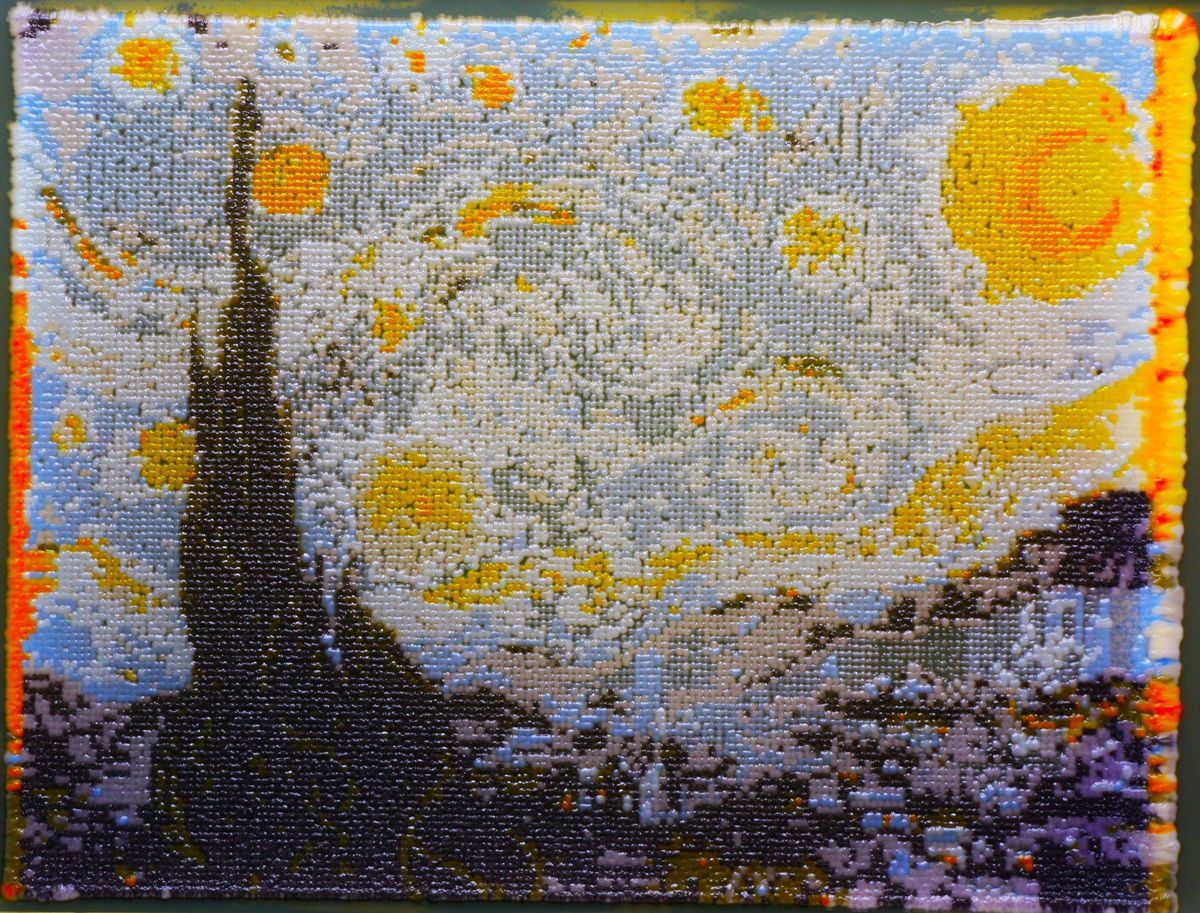
Showcasing Yeast Art
As the team incorporated more shades of color and intricate designs, their artwork received recognition. Since 2016, the Yeast Art Project has won science art competitions and has appeared on journal covers. The team also displayed the pieces at the grand opening of the New York Academy of Sciences headquarters in 2023, but curious onlookers’ wandering fingers smudged the ephemeral art. This led Wudzinska to encase the art in epoxy to increase its longevity.
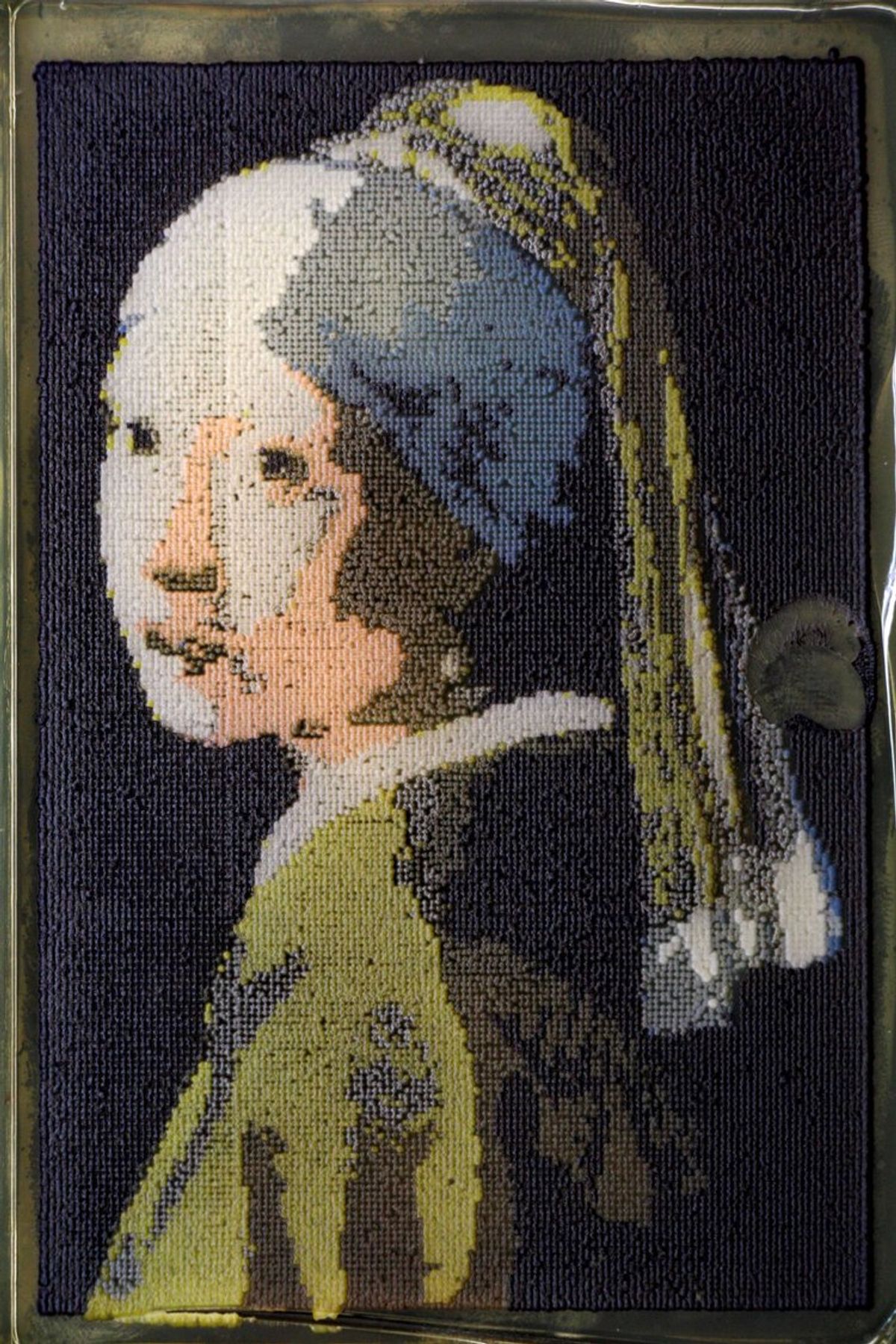
For Boeke, yeast art represents an exciting fusion of science and art for which he receives funding to support educational outreach. Boeke’s group sends these strains to high schools and undergraduate science programs, encouraging students to learn about genetic modification through hands-on workshops. “A lot of people really respond to this work and say, ‘Oh, it’s so interesting,’ because you can make art with genetically engineered yeast that can make all these beautiful colors,” said Boeke. He expressed his excitement in the evolution of this project and hopes to tackle a 100,000 biopixel image, though he is still mulling over the final design.
- Richardson SM, et al. Design of a synthetic yeast genome. Science. 2017;355(6329):1040-1044.
- Agmon N, et al. Yeast Golden Gate (yGG) for the efficient assembly of S. cerevisiae transcription units. ACS Synth Biol. 2015;4(7):853-859.
- Mitchell LA, et al. Versatile genetic assembly system (VEGAS) to assemble pathways for expression in S. cerevisiae. Nucleic Acids Res. 2015;43(13):6620-6630.
